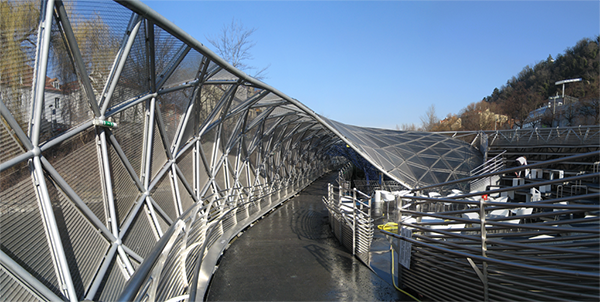Analysis of movement metabolista-japanese study obejto capsule tower architect kurokawa
Keywords:
Pós Modernismo., Metabolismo Japonês, Torre-cápsulaAbstract
ABSTRACT This research aims to introduce an even brief analysis metabolista movement that developed in Japan in the second half of the twentieth century. We present the characteristics of this movement, to then analyze the tower designed by architect Kurokama capsule. Japan's struggle to find a new architectural identity after the blasts at Hiroshima and Nagasaki was painful to early 60s, the influence on the new generation of architects until then was Le Corbusier, by Kenzo Tange and Tadao Ando, this was period that a group of young architects and critics has emerged as a kind of philosophy that founded new ideas taken from traditional Japanese design, architecture and pop of Le Corbusier and gave it the name of Metabolism. The metabolism name intended to suggest a biological design in buildings and cities that grew to meet the new requirements in a manner parallel nature, making full use of the latest and innovative construction technologies and forms of communication. The beginning of movement exhibited a series of imaginary projects and on this stage, the work considers the object of study with the Tower capsule, the architect Kurokawa, one of the only buildings completed. Keyword: Post Modernism. Japanese Metabolism. Tower capsule.Downloads
Downloads
Additional Files
Published
How to Cite
Issue
Section
License
Authors who publish in this journal agree to the following terms:
a) Authors retain the copyright and grant the journal the right of first publication, with the Project simultaneously licensed under the Creative Commons Attribution License that allows the sharing of the Project with recognition of the authorship and initial publication in this journal.
b) Authors are authorized to assume additional contracts separately for the non-exclusive distribution of the version of the Project published in this journal (e.g., publishing in an institutional repository or as a book chapter), indicating that it was originally published in this journal, with a link to the article.








 Todo o conteúdo de Cadernos de Pós-Graduação em Arquitetura e Urbanismo está licenciado sob
Todo o conteúdo de Cadernos de Pós-Graduação em Arquitetura e Urbanismo está licenciado sob 